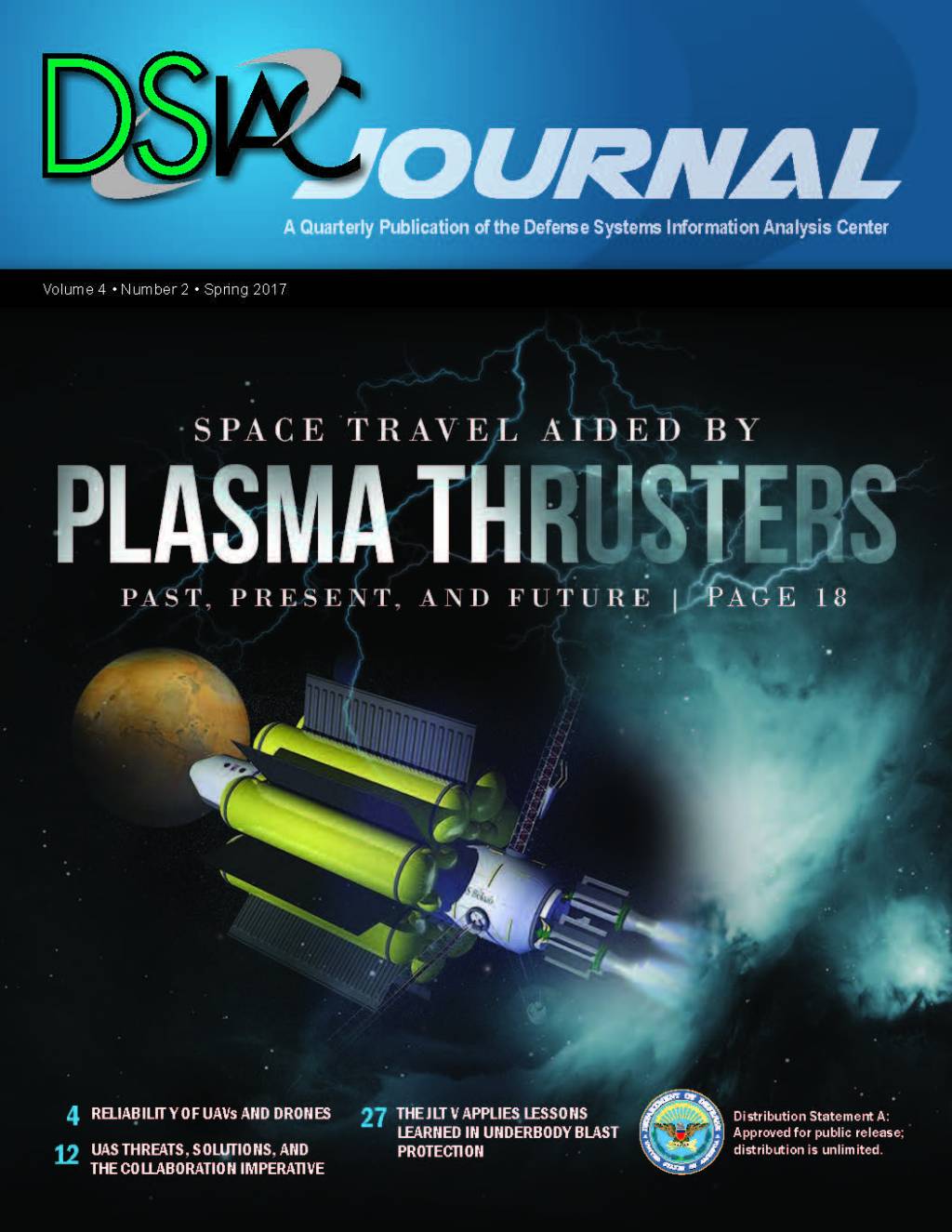Have you been wondering lately about space exploration developments since the completion of the final space shuttle mission on 21 July 2011? Well the National Aeronautics and Space Administration (NASA) continues to plan for further exploration, such as manned journeys to Mars, leveraging evolving space travel technologies.
In our feature article this quarter, Albert DeFusco, Christopher Craddock, and Wesley Faler discuss the merits of plasma thruster technology as an electric propulsion alternative to chemical propulsion. Hundreds of electric thrusters are presently deployed on communication satellites orbiting the earth and are also used to conduct deep-space probe missions. In these applications, where high fuel efficiency with exceptionally long operational times is required, electronic propulsion is more desirable than chemical propulsion, which typically exhausts stored energy in a matter of seconds or minutes. Advancements in plasma thrust design variants of electrical propulsion, such as fusion-assisted plasma thrusters, have the potential to drastically reduce space transit times. With these types of enhancements to plasma thruster technology, it is conceivable that the travel time for a Mars Transportation Orbiter could be reduced from upwards of a year to just a matter of days.
The use of unmanned aerial systems (UASs) and drones has boundless applications in both commercial and military applications. This journal issue includes two articles specific to related Department of Defense (DoD) concerns. The first article, by George Hansen and Frank Zeller, considers various reliability enhancement factors, such as integrated computational materials engineering (ICME), multiple-stress accelerated life testing (ALT), and the Design for Reliability (DFR) approach, along with their associated impact on reliability.
The DoD rapid acquisition and deployment of UASs since the mid-1980s are attributable to their ability to accomplish comparable missions to those performed by piloted aircraft assets without the potential risk to pilot life. Therefore, the use of UASs to perform combat missions has become the reconnaissance system of choice. The question then becomes whether or not the reliability of this technology has kept pace with the proliferation of its use.
With the ever-increasing UAS technology accessibility and use of UASs in combat situations, the DoD is challenged to have sufficient deployable counter- UAS solutions. The use of UASs for surveillance is an established practice, but the emergence of weaponized UASs and the threat they present, especially to dismounted troops, are significant concerns. This situation is driving government science and technology developers, academia, and industry technology innovation to address the need for technical solutions to counter UAS threats.
Our second article, by Joseph Schuman and Edward Hall, explores the use of programs that promote collaboration of diverse and nontraditional stakeholders to address ever-emerging UAS threats.
Military ground vehicle underbody blast (UBB) detonation is a key concern for the survivability and vulnerability community. Given the extensive use of improvised explosive devices (IEDs) by enemy forces in Iraq and Afghanistan in the early 2000s and the resultant threat to occupants within armored ground vehicles, the U.S. military has been faced with developing effective countermeasures. The Joint Light Tactical Vehicle (JLTV) program was established in 2006 to address this threat and combines the agility of the traditional High-Mobility Multipurpose Wheeled Vehicle (HMMWV) with the UBB protection of the Mine Resistant Ambush Protected (MRAP) truck. In our article on JLTV UBB protection, Brian Benesch discusses the design features of the JLTV that draw on lessons learned in UBB protection to result in enhanced vehicle survivability and mitigation of occupant injuries.


